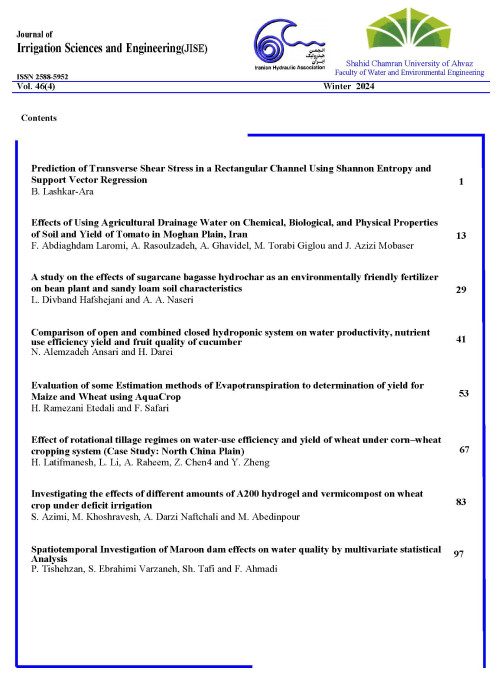Critical Submergence Estimation For Horizontal Intakes Derived From Reservoir Using Intelligent and Statistical Methods
Horizontal intakes are one of the most important parts of hydraulic sets such as rivers for irrigation or reservoirs for power generation and industrial purposes. Air entrainment, by means of a free air-core vortex occurring at intake pipes, is an important problem encountered in hydraulic engineering.
To develop and build the predictive models to estimate the critical submergence for a horizontal intake and evaluate the performance of these models, laboratory or field data are required. Gurbuzdal (2009) and Yildirim et al (2000) carried out an experimental study on critial submergence for horizontal intakes at a hydraulic laboratory. Yildirim et al ( 2000) experiments were performed at rectangular flume with 10m length and 0.5m width. Gurbuzdal (2009) was performed his experiments in a rectangular flume with 2.2m length and 0.63m width.
In this study, equations for estimating critical submergence are developed using experimental data. At first, the equation of present study was determined using dimensional analysis, nonlinear regression and SPSS software. In the next step, the artificial neural network and the genetic programming models were used to investigate the accuracy of the results. At first, a functional predictors for critical submergence using nonlinear regression was proposed. The proposed model includes the effect of relative width, horizontal distance of center point of intake to impervious dead, vertical distance of intake to bottom of canal, velocity and Froude number. Then the results of the proposed model were evaluated and compared with the previous studies. As well, with development of the hydroinformatics the Artificial Neural Network model and the genetic programming model are used. The results of these models are statically compared according to the root mean square error (RMSE), mean percentage error (MPE), standard error of the estimate (SEE), modeling efficiency (EF), correlation coefficient (R2) and The gradient of regression line between results and observations, m, is calculated for evaluating the performance of the model in a way that the intercept of the equation is zero. The results of previous research are used on this equation validation. The predicted results are close to the observations
- حق عضویت دریافتی صرف حمایت از نشریات عضو و نگهداری، تکمیل و توسعه مگیران میشود.
- پرداخت حق اشتراک و دانلود مقالات اجازه بازنشر آن در سایر رسانههای چاپی و دیجیتال را به کاربر نمیدهد.


